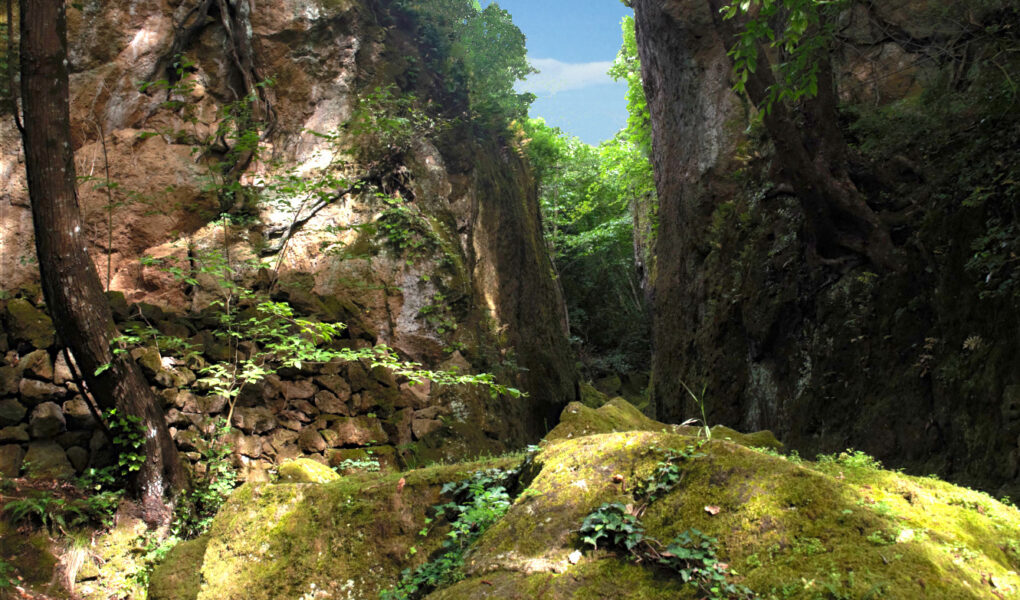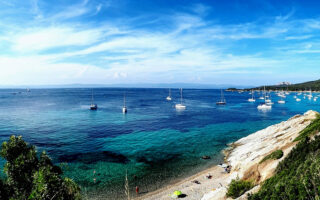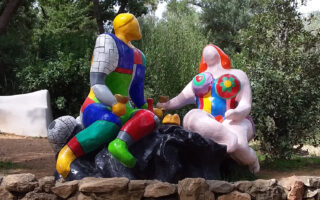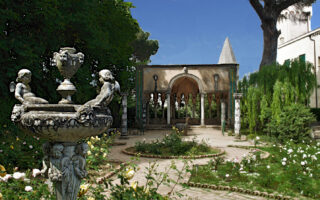Today’s motto is “Rise and shine and explore”
On the trail of the Etruscans in Tuscany
Most of the time, Nature is a generous and giving mother who provides her children with everything they need. However, suddenly she can act without mercy and behave more like the wicked stepmother. Whatever the case may be, her unparalleled memory can keep traces of long-extinct civilizations.
Today, we’ll be visiting some remains of the Etruscans, ancient people who inhabited part of western central Italy. But we are not about to explore an ‘ordinary’ archaeological site. Instead, we are going for a walk in the woods, through the mysterious canyons of Tuscany.
The mysterious canyons of Tuscany
One peculiarity about these numerous paths cut into the tufa is that the Etruscans themselves carved them out to a depth of 30 meters. For this reason, their Italian name is ‘Vie Cave’ (meaning ‘sunken roads’). But we’re not sure why they made this sort of narrow canyon. According to some, they were roads connecting the settlements of Pitigliano, Sorano and Sovana. Others suggest that they were ceremonial paths leading to burial grounds. And in fact, we can find ancient tombs along the trails. Now let’s find out what to see on the track.
Something unexpected in the woods
Here, out in the woods, along a thousand-year-old path that goes from Sovana to San Martino, you’ll come across something rather unexpected: a rare temple-shaped tomb. Today, the rock-cut sepulchre only retains some traces of coloured stucco on the columns and the passage to the burial chamber. However, in ancient times, it must have been spectacular.
Nearby archaeologists also discovered the ‘Tomb of the winged demons’. As the name suggests, a couple of winged creatures watched over the sarcophagus, together with two lions. Despite the passing of time, a lion still serves as a guardian. So does one of the demons. It’s Vanth, the one that escorts souls to the afterlife. And here, on its lid, is the sculpture of the deceased as he enjoys an eternal banquet holding a glass on a couch.
The tufa towns of Tuscany
Our journey continues from the realm of the dead to the world of the living. In fact, along the route, not only are there tombs but also a rock shelter with a chimney, used as a living place in remote times. But it’s not the only case. In the area, you will also see the cave settlement of Vitozza that was inhabited from the Etruscan times. It’s only a few miles away from Sorano, one of the so-called ‘tufa towns’. Thanks to its position on a rock spur, my favourite one is Pitigliano. Take your time to enjoy the breathtaking view over the valley and then get lost in the alleys.
A delicious pastry with a sad history behind it
Just one last recommendation: before leaving the town, do not forget to buy its unique sweet roll filled with walnut and honey. You can try this traditional Jewish delicacy only here, in Pitigliano. The pastry’s name ‘sfratto’ means ‘eviction’ in Italian, and its shape recalls the batons used by authorities to knock on the doors of the Jews to serve evictions notices. As Edda Servi Machlin writes in her cookbook ‘The Classic Cuisine of the Italian Jews’. “Much of Jewish food lore is based on reproducing, in a sweet form, some symbolic item of unhappy events of the past as a reminder of the constant and dreadful danger of their recurrence and also to ward off such a possibility.” Four hundred years later, people in Pitigliano give ‘sfratti’ as a weddings gift like a good luck charm to avoid fights. You can find it in several bakeries and little shops in town.



